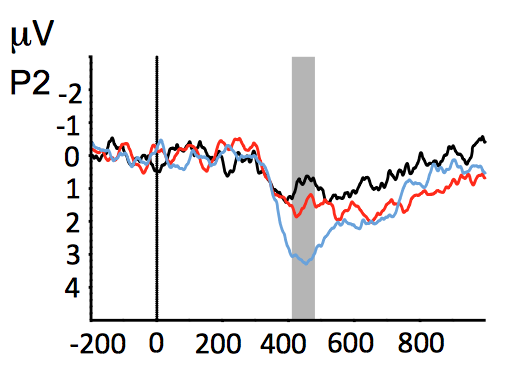EEG setup diagram from https://i.imgur.com/ZrmxJRu.jpg

John Kingston under the net

Locations of electrodes, from https://i2.wp.com/neurologiclabs.com/wp-content/uploads/2013/12/EEG.gif?ssl=1

Finding from Patel et al. (1998): violations of syntactic expectancies in music and language yield a shared neural response: a P600.
Methodology: Event-related potentials (ERPs), measured using electroencephalography (EEG)
For an intro to ERP, try Luck (2005): An Introduction to Event-Related Potentials and Their Neural Origins.
EEG setup diagram from https://i.imgur.com/ZrmxJRu.jpg

John Kingston under the net

Locations of electrodes, from https://i2.wp.com/neurologiclabs.com/wp-content/uploads/2013/12/EEG.gif?ssl=1

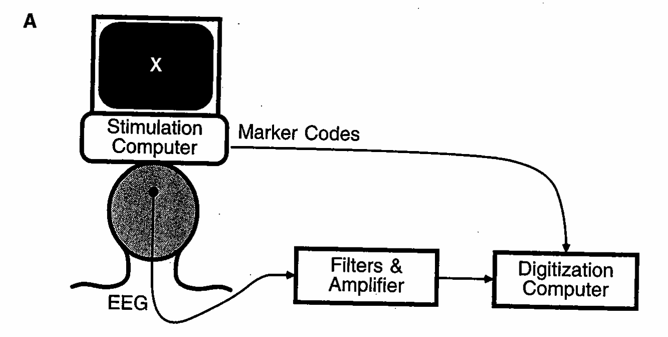
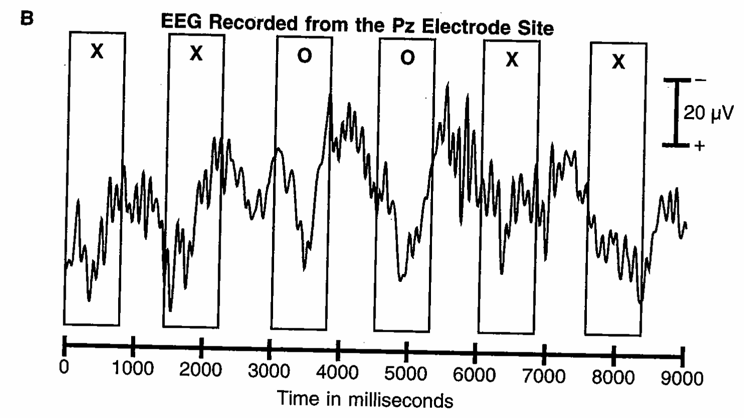
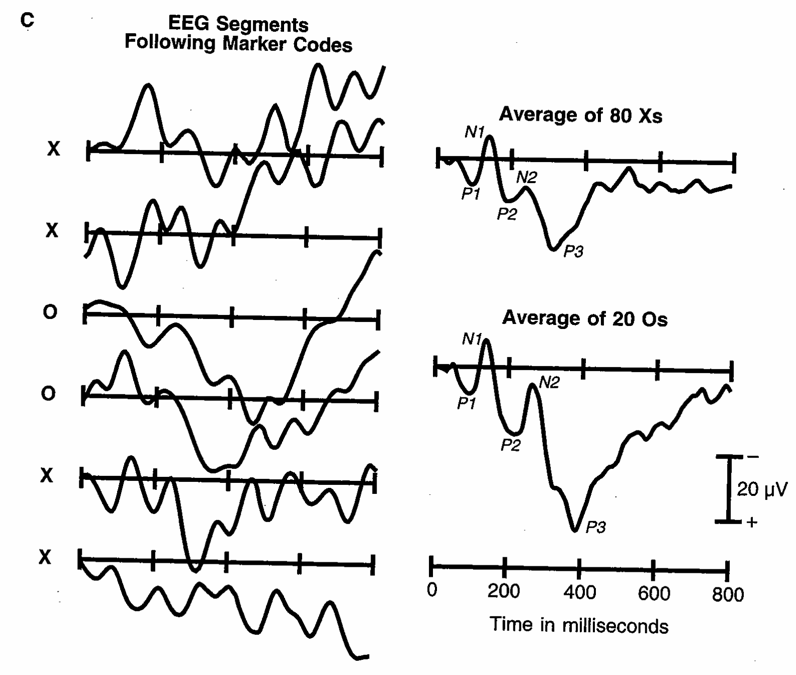
In the "violation" paradigm, one measures the difference in response to a stimulus that contains a violation of some expectancy, to a baseline comparison, in each case at some point in time after the stimulus presentation.
A P600 is a positive-going difference (deflection) approximately 600 msecs. after the relevant event.
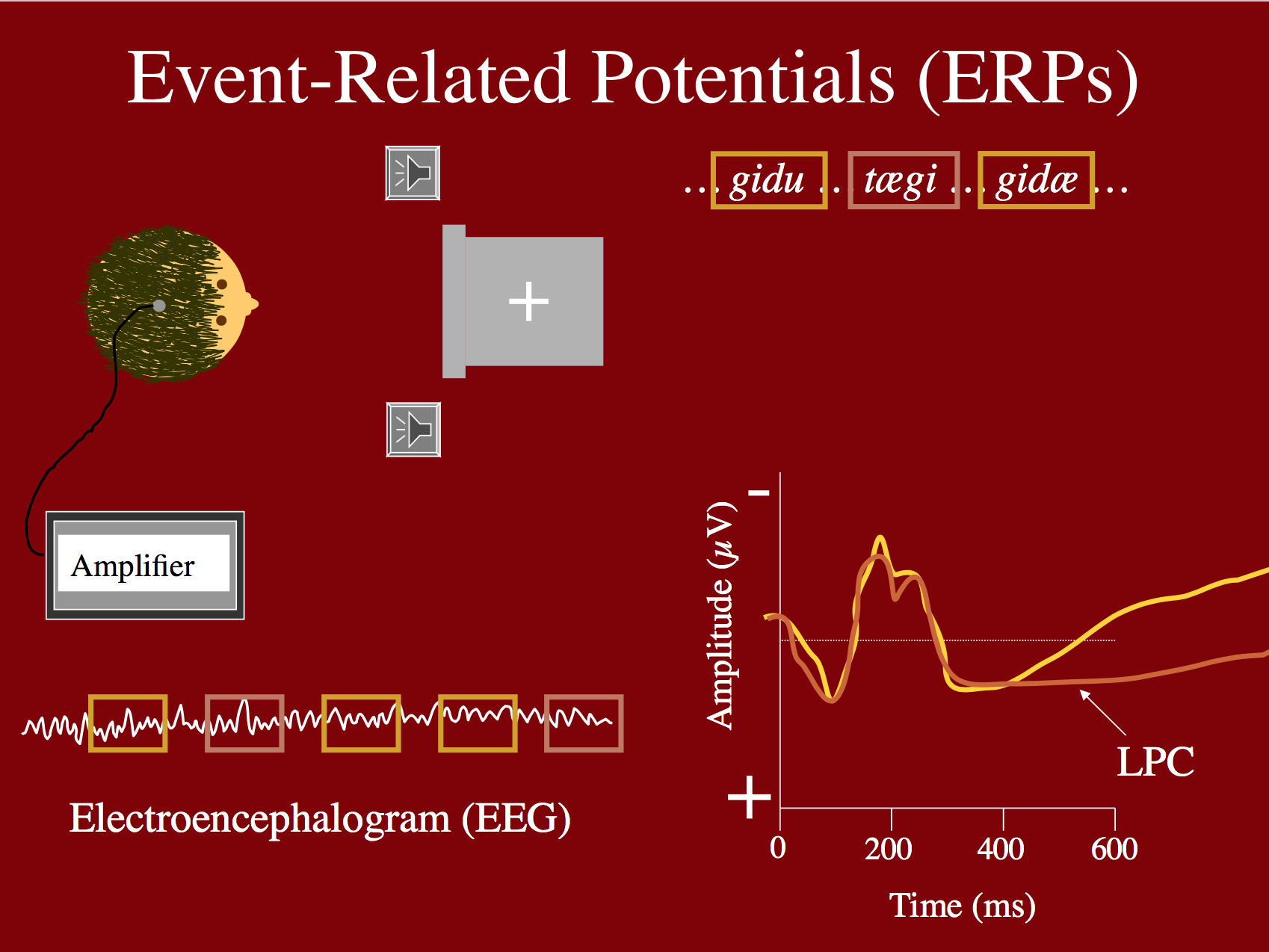
Linguistic examples:

Musical examples:
A Musical phrase with an in-key target chord
B Musical phrase with a nearby-key target chord
C Musical phrase with a distant-key target chord
Difference waveforms for C vs. A for music (dashed line) and language (solid line) from one point on the scalp (part of Figure 7).
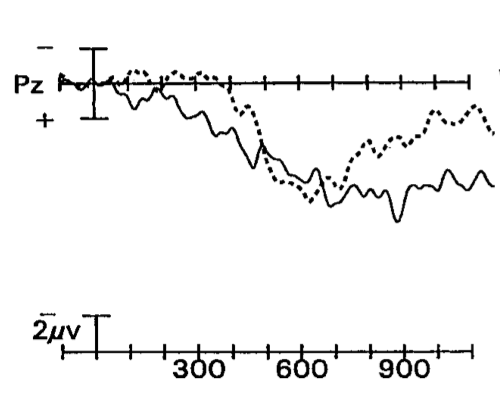
From the abstract:
A within-subjects design using 15 musically educated adults revealed that linguistic and musical structural incongruities elicited positivities that were statistically indistinguishable in a specied latency range.
Interesting further reading: Psyche Loui et al. (2016) on jazz musicians (blue line), non-jazz musicians (red line), and non-musicians (black line). Difference waves on high vs. low expectancy.
